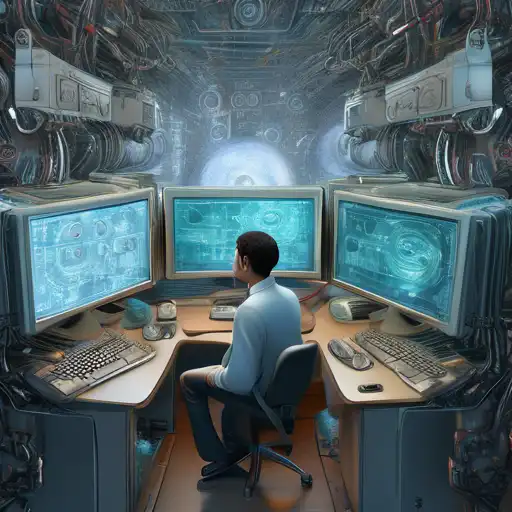Introduction to Computer Vision
Computer vision is a field of artificial intelligence that trains computers to interpret and understand the visual world. By leveraging digital images from cameras and videos and deep learning models, machines can accurately identify and classify objects — and then react to what they "see."
How Computer Vision Works
At its core, computer vision involves the automatic extraction, analysis, and understanding of useful information from a single image or a sequence of images. This process involves several steps, including image acquisition, processing, analysis, and understanding. The ultimate goal is to emulate human vision, enabling machines to perform tasks such as recognizing faces, interpreting scenes, and even driving cars autonomously.
Key Technologies Behind Computer Vision
- Deep Learning: A subset of machine learning that uses neural networks with many layers to analyze various factors of data.
- Image Processing: Techniques to enhance or otherwise manipulate images to prepare them for analysis.
- Pattern Recognition: The identification of patterns and regularities in data, which is crucial for object detection and classification.
Applications of Computer Vision
Computer vision has a wide range of applications across different industries. Here are a few examples:
- Healthcare: From diagnosing diseases through medical imaging to assisting in surgeries, computer vision is revolutionizing healthcare.
- Automotive: Autonomous vehicles rely on computer vision to navigate safely, recognize traffic signs, and avoid obstacles.
- Retail: Cashier-less stores and inventory management are becoming more efficient with computer vision.
- Security: Facial recognition and surveillance systems use computer vision to enhance security measures.
Challenges in Computer Vision
Despite its advancements, computer vision faces several challenges, such as the need for large datasets for training, the complexity of interpreting images with varying lighting and angles, and the ethical concerns surrounding privacy and surveillance.
The Future of Computer Vision
The future of computer vision is incredibly promising, with ongoing research focusing on improving accuracy, efficiency, and applicability. As technology advances, we can expect computer vision to become even more integrated into our daily lives, transforming industries and creating new possibilities for human-machine interaction.
For more insights into the latest trends in artificial intelligence and machine learning, check out our AI Trends article.
